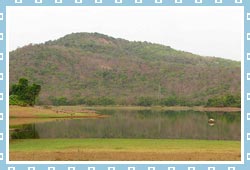 |
Facts About Tulsi Lake
The natural splendor of the lake enthralls the tourists and is a nice place for people to relax away from the daily chores of city life. Situated in the premises of Sanjay Gandhi National Park, the lake is noted for its picturesque, lush green backdrop and diverse flora and fauna. The lake has sustainable number of freshwater crocodiles called the 'Mugger' or 'Marsh Crocodiles'.
Being the second largest lake meant for regulating water supply to Mumbai, Tulsi Lake provides clean drinking water for the 'Bollywood city of India'. This Lake provides fresh water for the southern parts of the city.
History
The lake was formed as a result of controlling Tasso River and for the purpose coordinating with the Vihar Lake. The idea of building the Tulsi Lake began in 1872 A.D and the construction was completed in 1897 A.D. It has a total surface area of 1.35 km� (135 hectares) with an average depth of 12m. The mean depth of the lake is 12m and the catchment area approximately ranges to 6.76 km�. It comprises of a gross storage of 2,294 million imperial gallons of water at full supply level from which approximately 4 million imperial gallons per day are supplied to Mumbai city. Majority of water requirements of the southern part of Mumbai are met using the fresh water supply of this lake.
Restricted Entry
Entry for the common public is restricted and hence, you need to take prior permission from Sanjay Gandhi National Park authorities before heading to the lake. This is because of the presence of numerous crocodiles and other reptiles and many migratory birds in the lake. However, it is one of the most sought after destinations by the tourists and gaining such permission may not be all that difficult.